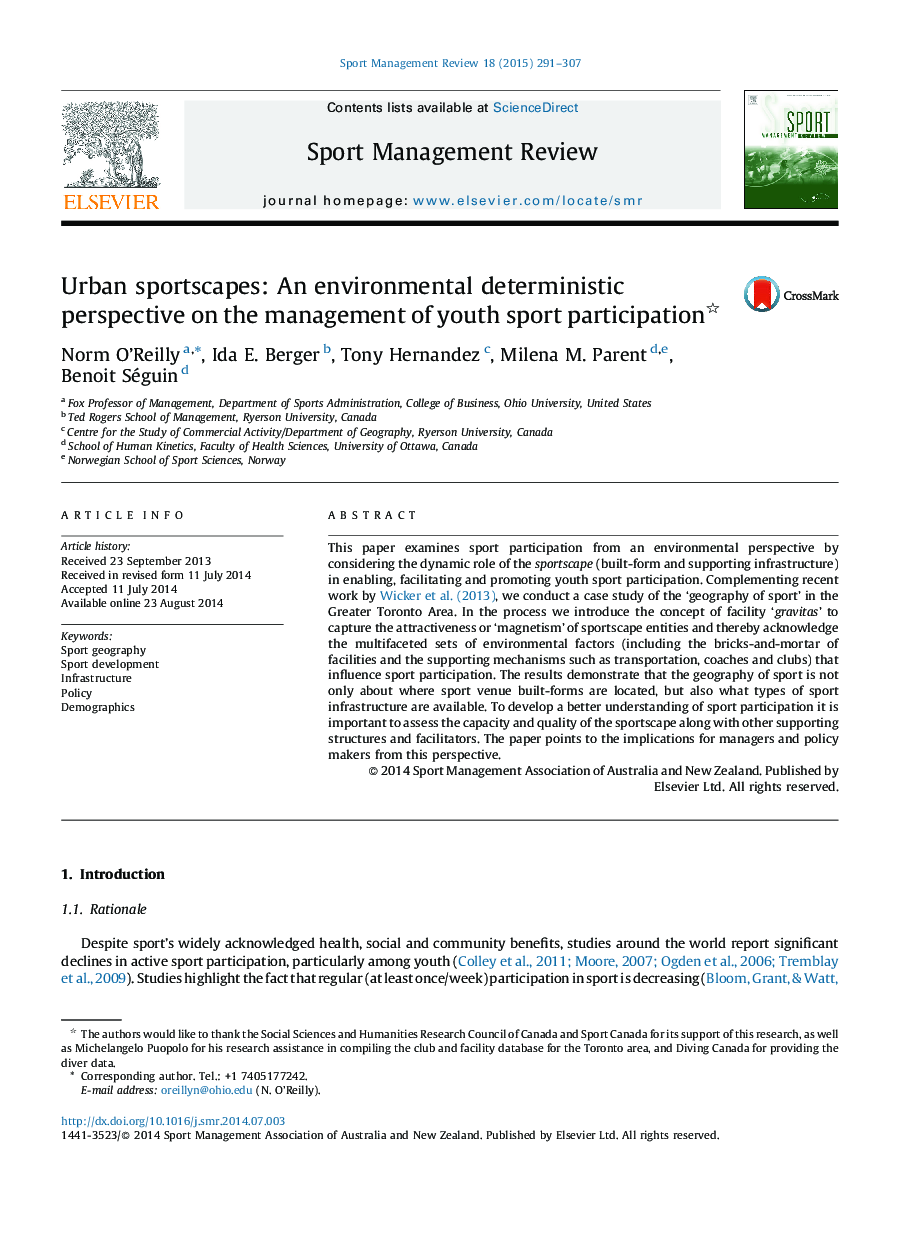| کد مقاله | کد نشریه | سال انتشار | مقاله انگلیسی | نسخه تمام متن |
|---|---|---|---|---|
| 140868 | 162789 | 2015 | 17 صفحه PDF | دانلود رایگان |
• Sport participation is researched from an environmental deterministic perspective.
• The study builds on previous work on the topic (Wicker et al., 2013).
• Sport geography and central place theory are used to frame the study.
• The concept of ‘gravitas’ is introduced and developed as a way of conceptualizing facility attractiveness.
• The sportscape impacts youth sport participation with implications for policy and programs.
This paper examines sport participation from an environmental perspective by considering the dynamic role of the sportscape (built-form and supporting infrastructure) in enabling, facilitating and promoting youth sport participation. Complementing recent work by Wicker et al. (2013), we conduct a case study of the ‘geography of sport’ in the Greater Toronto Area. In the process we introduce the concept of facility ‘gravitas’ to capture the attractiveness or ‘magnetism’ of sportscape entities and thereby acknowledge the multifaceted sets of environmental factors (including the bricks-and-mortar of facilities and the supporting mechanisms such as transportation, coaches and clubs) that influence sport participation. The results demonstrate that the geography of sport is not only about where sport venue built-forms are located, but also what types of sport infrastructure are available. To develop a better understanding of sport participation it is important to assess the capacity and quality of the sportscape along with other supporting structures and facilitators. The paper points to the implications for managers and policy makers from this perspective.
Journal: Sport Management Review - Volume 18, Issue 2, May 2015, Pages 291–307
